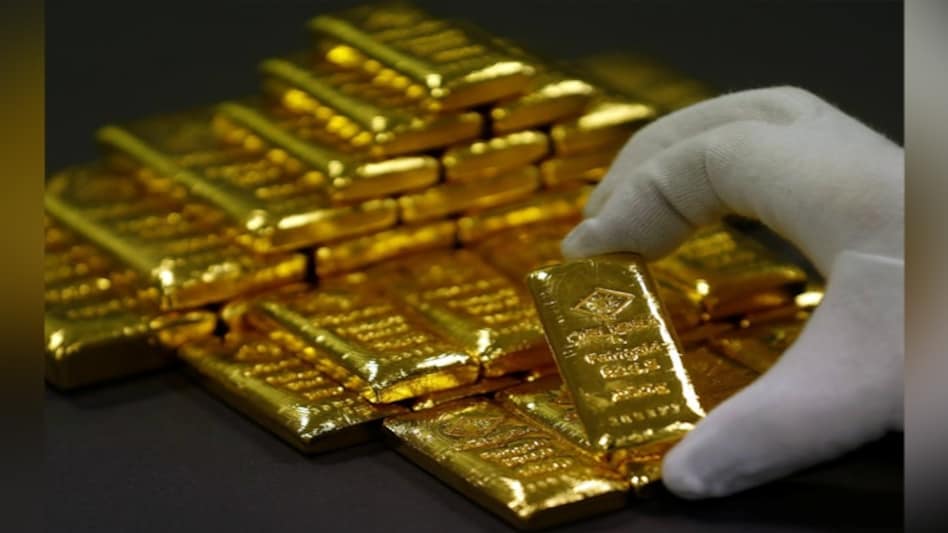Key Highlights
- Federal Reserve Governor Christopher Waller’s comments on desiring more monetary tightening have triggered a mini crash in gold prices and weighed on other precious metals, leading to a slump in gold prices and wiping out recent gains.
- The Fed faces a delicate balancing act between job growth and inflation, with Waller suggesting that more rate hikes may be needed until inflation moves down towards the target of 2%, despite easing inflation data and strong jobs numbers.
- Gold bulls had a euphoric run until Friday’s abrupt turn, gaining over 2.6% in just three sessions between Monday and Thursday, but gold prices are expected to remain volatile in both directions in the short term.
The debate over whether the US Federal Reserve is done with rate hikes is shaping the narrative across markets, including commodities like oil and gold. Recent comments by Federal Reserve Governor Christopher Waller, a known rate hawk, have triggered a mini crash in gold prices, which until Thursday were on track to hit a new record peak.
The Fed faces a delicate balancing act between job growth and inflation, both of which are top priorities for the central bank. In this article, we explore the impact of the Fed’s monetary tightening on commodities.
What You Should Know
On Friday, we again witnessed the impact of this buzz-phrase as Federal Reserve Governor Christopher Waller said he desired more monetary tightening despite evidence that inflation in the United States was steadily coming off the highs of recent months. Waller’s call helped trigger a mini crash in prices of gold and other precious metals, which until Thursday had seemed to be on track to a new record peak. This is because the suggestion of a higher interest rates environment tends to benefit the dollar and weigh on gold.
The precious metal space wasn’t the only commodity that took a hit from Waller’s remarks on Friday. The dollar’s rebound from a one-year low also led crude to settle with just a modest advance instead of what might have been larger gains, after the global energy agency IEA upgraded oil’s demand prospects in 2023.
Ed Moya, the analyst at online trading platform OANDA, explained, “Hawkish Fed comments raised the risk that the Fed could do more tightening beyond May and that rates might need to stay higher for longer.” The U.S. Federal Reserve has so far added 475 basis points to rates over the past 13 months, taking them to a peak of 5% from the 0.25% level they were at during the start of the COVID-19 outbreak in March 2020.
Ahead of Waller’s remarks on Friday, some economists were betting on the Fed to pause on rates at its next policy decision scheduled for the 3rd of May, 2023. This sentiment came about after the Consumer Price Index, the Feds preferred measure of inflation, expanded at an annual rate of 5% in March versus February’s 6%. In June, the so-called CPI was up 9.1% on the year, hitting a four-decade high. The Fed’s own appetite for inflation is just 2% per annum. CPI aside, U.S. wholesale prices fell their most in nearly three years last month, according to a separate reading on inflation.
Despite the easing inflation picture, some economists still priced in a 25-basis point hike on May 3. This was because of the U.S. jobs report for March, which saw non-farm payrolls growing by almost 240,000 versus the Fed’s desire for the growth of less than 200,000.
The Fed has a particularly delicate job in trying to balance the growth in jobs and wages with that in inflation. Both are top priorities for the central bank, which is mandated with ensuring “maximum employment” through a jobless rate of 4% or below and keeping inflation manageable at around 2% per annum. One of the Fed’s biggest challenges has been stellar jobs data as the nation’s labor market continues to stun economists with stupendous growth month after month.
While policymakers typically celebrate seeing good job numbers, the Fed faces a different predicament. The central bank wishes to see an easing of labor conditions that are a little “too good” now for the economy’s own good, in this case, unemployment at more than 50-year lows and average monthly wages that have grown without stop since March 2021.
Such job security and earnings have cushioned many Americans from the worst price pressures since the 1980s and encouraged them to continue spending, further feeding inflation. Economists say monthly job numbers need to grow meaningfully below expectations to create some ding at least in employment and wage security which the Fed suggests are its biggest two headaches now in fighting inflation.
“Because financial conditions have not significantly tightened, the labor market continues to be strong and quite tight, and inflation is far above target, so monetary policy needs to be tightened further,” Waller said on Friday.
The Fed governor said he would welcome signs of moderating demand, “but until they appear and I see inflation moving meaningfully and persistently down toward our 2% target, I believe there is still work to do.” Uncoded, that meant more rate hikes.
The fantasy ride of gold bulls was cut short on Friday by the dollar’s ramp-up from a one-year low, handing those long on the yellow metal their biggest loss in three weeks.
Gold for June delivery on New York’s Comex showed a final post-settlement trade of $2,017.70 an ounce. According to CME information, it officially closed the session at $2,015.80, down 1.9% on the day.
The slump wiped out all of Thursday’s rounded-up gain of 1.5%. It was the largest one-day decline in a front-month Comex gold contract since a 2.1% fall on March 31.
The spot price of gold, more closely followed than futures by some traders, settled at $2,004.26, down 1.8%. It got to a low of $1,992.46 during the session.
Until Friday’s abrupt turn, gold bulls had one of their most euphoric runs in under a week, gaining more than 2.6%, in just three sessions between Monday’s close and Thursday’s settlement. OANDA’s Moya stated, “Over the short-term, gold could remain very volatile in both directions here.”
Notwithstanding gold’s latest setback, Moya said there were enough reasons for investors to stay positive on the safe haven. “Hawkish Fed comments raised the risk that the Fed could do more tightening beyond May and that rates might need to stay higher for longer,” he added. “In order for inflation to be conquered, we will need to see economic pain and that should support the bullish case for gold.”
Oil Post Gains for the 4th Consecutive Week
Oil markets rose for a fourth consecutive week, riding on global energy agency IEA’s upgraded demand prospects for 2023, although gains for Friday were cut by a resurgent dollar, which is usually bearish for commodities.
New York-traded West Texas Intermediate settled at $82.52 for the week, gaining 2.3% from the March 6 settlement of $80.70. London-traded Brent showed a final trade of $86.63 per barrel for the week, gaining 1.4%.
Crude prices lost much of Friday’s upward momentum after Fed Governor Waller’s remarks favoring more rate hikes. Oil rallied earlier in the day after the Paris-based International Energy Agency, IEA, said demand for crude could hit a record peak in 2023, helped by a spike in consumption by top importer China. But the IEA also warned that the surprise oil output cut announced earlier this month by producer group OPEC+ risks exacerbating a projected supply deficit and could scupper economic recovery.
the IEA said, “Consumers confronted by inflated prices for basic necessities will now have to spread their budgets even more thinly. This augurs badly for the economic recovery and growth.”
OPEC+ groups the 13-member Saudi-led Organization of the Petroleum Exporting Countries with 10 independent oil producers, including Russia. The wider alliance announced on April 3 that it will cut a further 1.7 million barrels daily from its output, adding to an earlier pledge from November to take off 2.0 million barrels per day.
OPEC+, however, has a history of over-promising and under-delivering on production cuts. While the group achieved over-compliance on promised cuts in the aftermath of the 2020 coronavirus breakout, experts say that was more a result of battered demand that led to minimal production, rather than a will to cut barrels as pledged.






















Nice post…
Thanks….